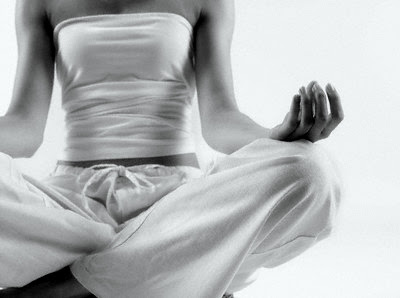...today a light bulb went off when I was teaching my 6:30-7:45 a.m. Integral Yoga Hatha I class. DING!
- I realized that although I had practiced hatha yoga for over six years before I became a teacher, I never truly understood the fundamental concept of an asana;
- it was only through my Integral Yoga Hatha I training at Satchidinanda Ashram-Yogaville (i.e. in spring 2011) that the term asana starting to have real meaning for me; and
- consequently, the majority of my students probably do not know or understand the definition of an asana (outside of it being a yoga post, that is).
- in a 60 minute class, a student practices approximately 15 asanas;
- in a 75 minute class, a student practices approximately 20 asanas; and
- in a 90 minute class, a student practices approximately 25 asanas.
Note: These figures do not represent mudras (or seals, in Sanskrit), yoga nidra/savasana, or pranayama exercises (i.e. breathing practices).
So today, as I was teaching, it struck me that my students might not have the most basic (and therefore the most important and profound) understanding of the postures they were practicing. I paused, I briefly explained the source of the definition of an asana, and I decided to come home and right this post for any and all that are reading.
If you currently practice yoga, ever plan to practice yoga in the future, or for that matter perform any type of physical exercise, this definition might serve you well.
Asana = steady and comfortable posture
Although Westerners often consider the practice of asana or postures as an exercise regimen or a way to stay fit, Patanjali and other ancient yogis used asana to prepare the body for meditation. To sit for a lengthy time in contemplation required a supple and cooperative body. If you are free of physical distractions — such as your foot going to sleep — and can control the body, you can also control the mind. Patanjali said, "Posture is mastered by freeing the body and mind from tension and restlessness and meditating..." (source)
The term "steady" might also be understood as stable, constant, or motionless. Therefore, as a student of yoga it is important that you develop your asana in a way that is stable for your body, and where you are able to maintain a constant physical position while breathing.
The term "comfortable" might also be understood as "filled with ease." For instance:
- Can you breath comfortably?
- Are you relatively relaxed?
- Are you peaceful?
- Are you experiencing a "comfortable" stretch and/or release into the asana?
 |
| Sukhasana - Easy Pose |
Now, I would like to take a pause here to note the distinction between easy/comfort and laziness. As Swami Satchidinanda would say, "Be easy, but don't be lazy." Unless you are in a restorative yoga class, you should be exerting some physical effort into your practice. However, that effort should never result in:
- an inability to breathe deeply;
- sharp pain in the muscles or joints;
- intense strain; or
- extreme mental or emotional discomfort.
For all of these reasons, and many more, I always try to emphasize that your yoga practice is exactly that: YOUR yoga practice. Not mine. Not the person's on the mat beside you. Not your ego's.
And with that, I will close with a final point: there is no perfect asana. Period.
There is only YOUR perfect asana
And ironically, your "perfect asana" will change in every living moment. So we are left will little choice but to embrace the golden present, for it is all we have...in asana...and in life.
P.S. To view other yoga posts that I have written, visit the ABC blog "Yoga" page!
Question of the Day:
What does being "steady" and "comfortable" mean to you? Or rather, how can you apply this concept to your life?
Blessings,
Ally and Bo



No comments:
Post a Comment